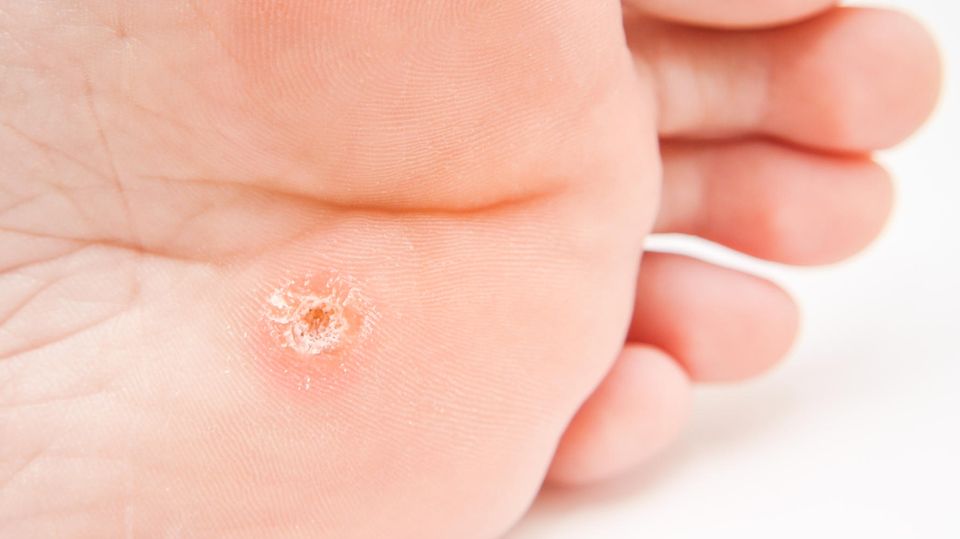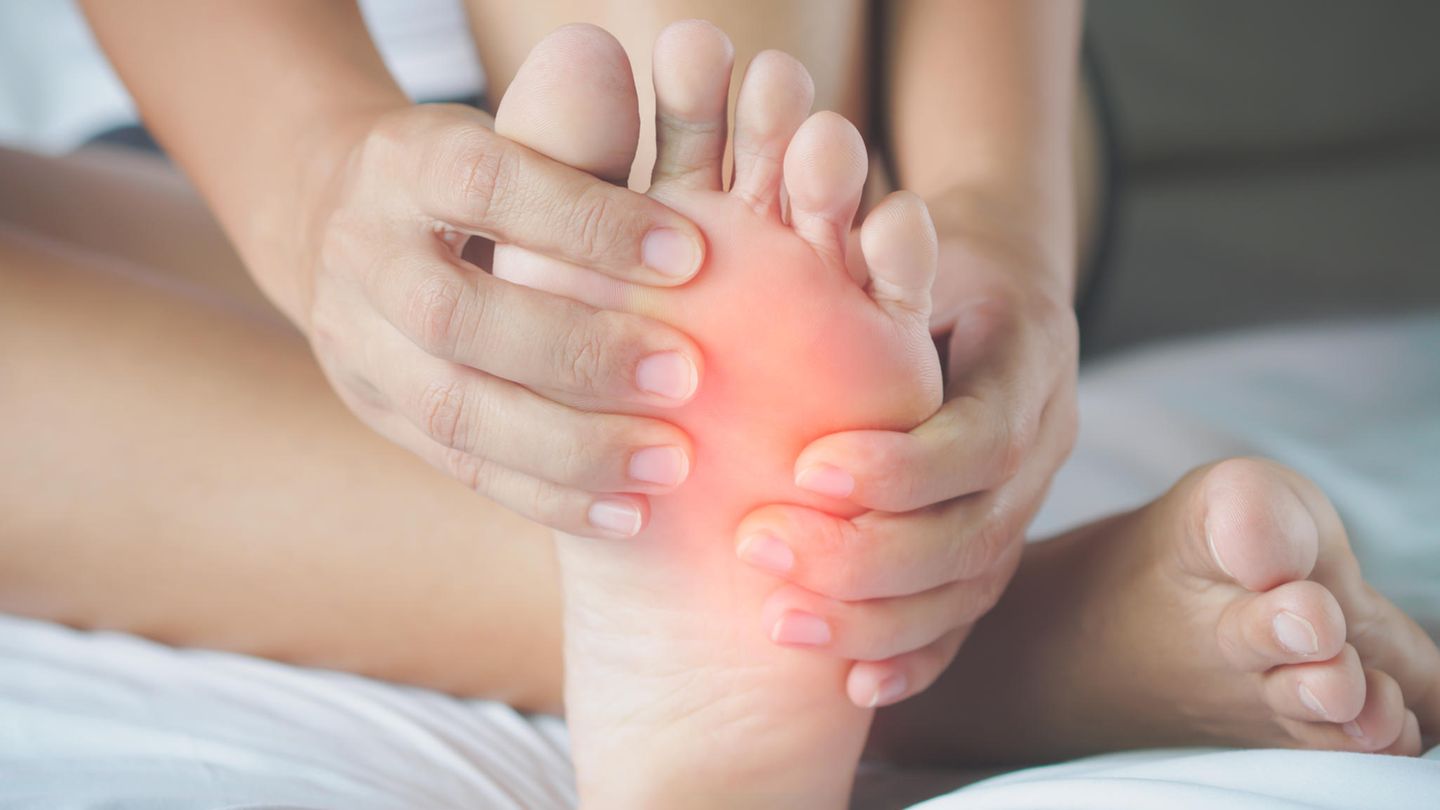Corns develop when the skin is repeatedly exposed to pressure and friction over a long period of time. If they are not treated, they develop into painful cornifications. Find out how to remove and prevent corns here.
Corns can be developed by anyone; they form mainly on the toes and under the soles of the feet when the relevant skin area is exposed to pressure over a long period of time. In the first step, the horny layer thickens and a callus develops. If the pressure persists, it can develop into a painful corn. Experts also refer to it as the “clavus”. Here you will find tips on how to remove a corn and how to prevent new cornifications from developing on the skin.
What does a corn look like?
A corn is often painful if left untreated. Those affected feel it on the foot especially when standing and walking. You can then see a rounded, wart-like cornification, which is usually particularly sensitive to pain in the middle. The area in the middle is also called the thorn. The middle often looks a bit glassy, so the appearance is reminiscent of a bird’s eye – this is how the name corn is derived. It is also noticeable for its raised shape and a yellowish, beige color of the cornea. However, when corns appear in the space between the toes, they often appear whitish and are softer than other parts of the foot. This is due to the moisture that collects between the toes and which causes the horny layer to swell. A rough distinction can be made between hard and soft corns. Hard corns usually develop on the smaller toes, where poorly fitting shoes create friction and pressure. The soft shape of corns, on the other hand, tends to form between the toes.
How do you remove a corn?
It is important that you eliminate the cause of the corn immediately before the treatment. These are usually the wrong shoes that have put pressure on the affected area of skin for too long. This will allow for faster healing and avoid relapse. In addition, you must not injure your skin, because those affected often try to remove the corn with knives or other sharp objects. We strongly advise against this, because injured skin is always a possible entry point for germs and bacteria. In general, you should leave corns to a specialist, because only with Corns in the early stages there are methods you can use to remove corns yourself. For diabetics and rheumatism patients, however, the following applies: People with sensitive or porous skin should better consult a doctor if they have foot problems. Depending on the type, depth and extent of the corn, these recommendations apply:
- Small, Flat Corns: You can try to remove this shape yourself. If this does not work or if the corn keeps coming back, you should seek advice from a dermatologist.
- Large, deep corns: As soon as corns are extensive or go deep into the skin, the cornifications must be professionally removed by a specialist.

Remove a corn yourself
There are practical options for treatment that can be worn for several days. However, it is best to start with a warm foot bath to soften the corn area a little. Then stick the corn plaster on the affected area of skin and leave it on – depending on the manufacturer’s recommendation. The treatment is followed by a warm foot bath to soften the skin. Then you can try to gently remove the corn. If the skin is not soft enough and the removal causes pain, repeat the treatment again. are available over the counter in pharmacies, drugstores or on the Internet. The plasters are soaked with keratolytic agents, which are active ingredients that dissolve the horn, such as salicylic acid, which soften the upper cornea of the corn.
Home remedies for corns
Home remedies are particularly easy and gentle to use. It is important with all home remedies that, similar to corn plasters, they only have an effect on small and flat corns.
- Foot bath: A foot bath softens the callus and so you can remove the corn afterwards.
- Tea tree oil: Tea tree oil is said to help soften the skin. For example, there is a practical one ,which can be applied specifically to the affected skin.
Which doctor can remove a corn?
If your corn is already too advanced and the treatment with a corn plaster is unsuccessful, you must consult a specialist to remove the corn. This can be a dermatologist or medical foot care.
Three tips to prevent corns
To prevent corns from forming, there are three things to look out for:
- Tight shoes are the number one cause of corns formation. Therefore, you should always make sure to wear comfortable and suitable shoes.
- Socks can cause corns if the seams are too hard that the shoe presses onto the skin.
- Foot care is important because excess calluses and calluses should be treated regularly. A is suitable for this or one . Also applying one is recommended.
Note: This article contains general information and is not a substitute for a doctor’s visit.




